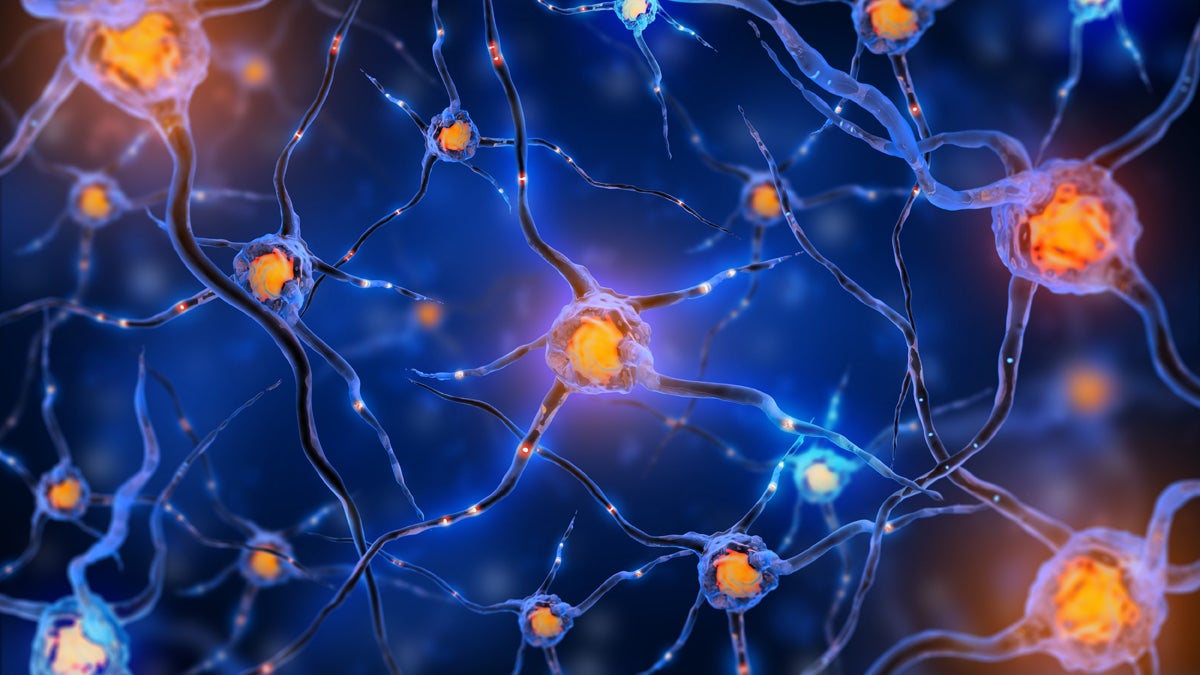What neuronal connections in your brain say about your stress response
Listen
What can the neuronal connections in our brains tell us about how we handle stress long-term? (http://www.shutterstock.com/pic-199594100/stock-photo-illustration-of-a-nerve-cell-on-a-colored-background-with-light-effects.html?src=U1tw7pMTz7sXaaBFl5If/A-1-9
Why are some people able to shake off stress more than others? A recent study could provide some clues.
“A lot of people have been asking, ‘what is the difference between those people?'” said Bethany Brookshire, of Science News and a regular contributor to The Pulse. “What’s the difference in their brains, between someone who can recover from stress and move on verses someone who develops a major depressive episode?”
In a recent study by Minghui Wang and colleagues at Cold Spring Harbor Laboratory in New York, researchers looked at mice using a technique called learned helplessness. Mice were put in a small cage for about an hour while being exposed to random electrical shocks to their feet. Following the exposure to the shocks, the mice were given the opportunity to escape.
“Mice that respond with resilience to this learned helplessness paradigm see the light and run straight for the door. They know to get out. If they run fast enough, they will never get shocked again,” said Brookshire. “Mice that are susceptible [to stress] and display learned helplessness kind of hunker down and take it. They don’t attempt to run for the door, they don’t attempt to escape.”
Researchers found that the mice who were resilient to the stress, who recovered and acted just fine, actually had fewer neuronal connections in the prefrontal cortex of the brain than the mice who were susceptible to the stress. The mice that responded with depressive-like behaviors showed more neuronal connections.
Brookshire says the study presents a correlation between neuron connection and stress response, but it’s difficult to say whether the connections themselves are the depressive response or not.
“What’s interesting is that the increases in connections between the brain cells in the prefrontal cortex are in an area in mice that is similar to an area in humans, called Brodmann area 25,” said Brookshire.
It’s an area that has been the target of a lot of research because dysfunction in this area has been linked with recurring major depressive disorder.
Studying these changes, neuron connections and underlying differences in mice could be used to analyze the changes in brain activity in depression.
“Understanding that could give us new drug targets and new brain areas to look at when finding treatments for major depression,” said Brookshire.
Bethany Brookshire is a writer for Science News and regular contributor to The Pulse.
WHYY is your source for fact-based, in-depth journalism and information. As a nonprofit organization, we rely on financial support from readers like you. Please give today.



